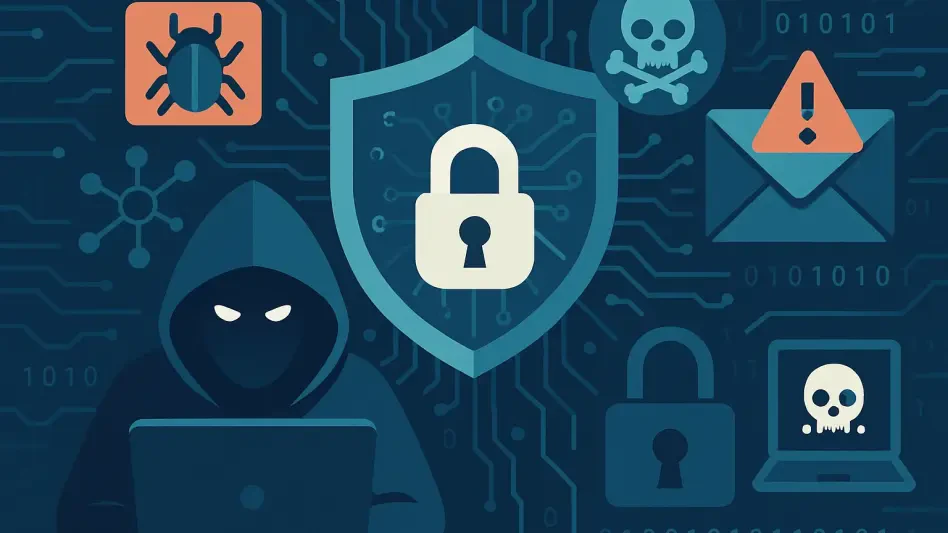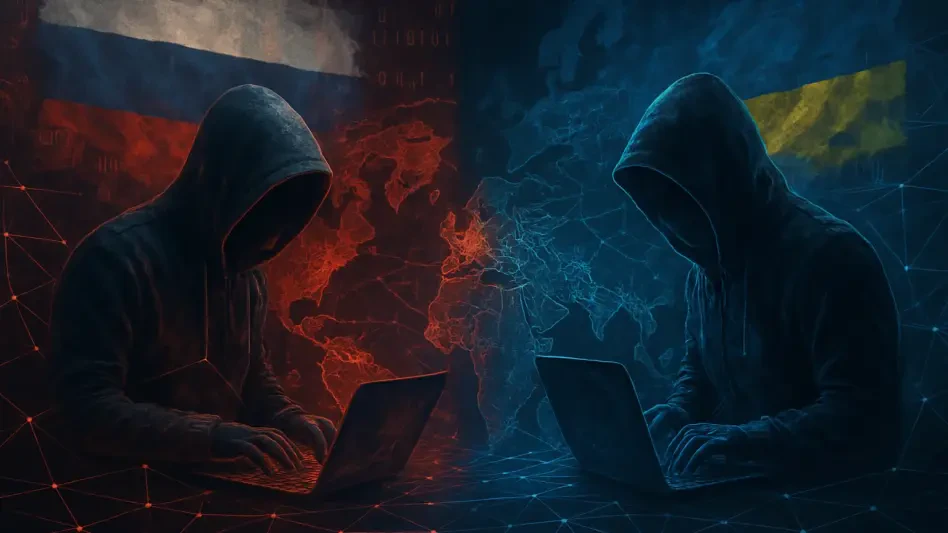In an era where both governments and private sectors heavily rely on digital infrastructure, the escalating cyber threats from the People’s Republic of China (PRC) pose significant risks to national and international security. The Salt Typhoon hack stands as a testament to the sophistication and scale of these cyberattacks, targeting vital infrastructure across Asia, Europe, and the U.S. Urgent global cooperation and effective legal mechanisms are prerequisites to combat these persistent threats, which endanger sensitive data and national security.
State-Sponsored Intrusions
The Scale and Intent of Salt Typhoon Hack
State-sponsored cyber threats have reached unprecedented levels of sophistication, with the Salt Typhoon hack, orchestrated by the CCP’s Ministry of State Security, serving as a glaring example. This operation specifically aimed at key infrastructure, including government systems, financial institutions, and telecom networks in multiple regions. The primary objective was not merely data theft but ensuring a sustained intrusion to surveil and manipulate critical systems over extended periods, providing the PRC with strategic advantages.
The insidious nature of these attacks highlights an alarming trend where government-backed hackers persist in their endeavors, circumventing cybersecurity measures with advanced strategies. Unlike typical cybercrimes aimed at financial gain, these state-sponsored attacks have far-reaching implications, from compromising national security to disrupting public services. The revelation of such sophisticated intrusions underscores the pressing need for robust cybersecurity frameworks that can thwart these dangers effectively.
Persistent Presence in Infrastructure
One of the most alarming aspects is the deliberate strategy to maintain a persistent presence within the compromised infrastructure. By embedding themselves deeply into the systems, the attackers can continuously gather intelligence, disrupt operations, or launch further attacks at opportune moments. This persistence not only exacerbates the damage but also complicates detection and mitigation efforts, posing long-term security challenges for the targeted nations.
Moreover, this persistent threat necessitates continuous vigilance and adaptive cybersecurity measures from affected entities. Security experts emphasize the importance of not just reactive defenses but proactive strategies to predict, detect, and neutralize potential threats before they can embed themselves deeply within critical systems. This proactive stance is crucial to safeguarding national security and maintaining the integrity of essential services and infrastructure.
Complex Legal Landscape
Ambiguity in International Law
The current international legal framework struggles to keep pace with the evolving nature of cyber warfare. While the principle of sovereignty is central to international law, the classification of cyber espionage and attacks remains murky. There is no universal agreement on what constitutes a “cyber act of war,” creating a gray area in which state-sponsored hackers can operate with relative impunity. This legal ambiguity hinders the formulation of coherent, unified responses to such threats, emphasizing the need for updated legal statutes explicitly addressing state-sponsored cyber activities.
Without clear codification in international law, countries find themselves grappling with the dilemma of how to categorize and respond to these digital incursions. The lack of consensus on legal definitions and boundaries not only complicates retaliation efforts but also emboldens state-sponsored actors who exploit these ambiguities to their advantage. Therefore, establishing precise legal standards and classifications for cyber acts of aggression is essential in fortifying global defense mechanisms.
Challenges in Legal Response
Countries impacted by these cyber threats face significant hurdles in mounting effective legal responses. The nuances of attribution, wherein identifying the true perpetrator behind sophisticated cyberattacks requires substantial evidence and technical expertise, play a crucial role in this challenge. Even when attribution is successful, the fragmented legal frameworks across different nations further complicate the pursuit of coordinated legal action. This fragmentation often results in patchwork responses rather than cohesive international strategies to deter and combat state-sponsored cyber intrusions.
Additionally, geopolitical considerations influence the legal and diplomatic responses to cyber threats. The complexities of international relations and the intertwined economic dependencies often result in muted reactions or carefully calibrated measures to avoid escalating tensions. Bridging these gaps requires concerted efforts towards international agreements and treaties that harmonize legal frameworks and streamline collaborative actions, thereby enhancing the efficacy of global responses to cyber threats.
Need for Strong Cybersecurity Regulations
International Collaboration and Regulation
In the face of escalating cyber threats, enhanced international collaboration and robust regulatory frameworks are imperative. Current laws, like Europe’s GDPR and the U.S. Cybersecurity Information Sharing Act, primarily aim to protect private entities and personal data. However, they fall short in addressing the broader implications of state-sponsored cyber warfare. To bridge this gap, comprehensive global regulations and treaties that explicitly target state-sponsored activities, coupled with effective enforcement mechanisms, are crucial in mitigating cyber threats.
These regulations should encompass stringent security measures, mandatory reporting of breaches, and clear guidelines for international cooperation in the investigation and prosecution of cyber crimes. Collaboration among international stakeholders is vital to ensure cohesive strategies and unified responses that can prevent cyber espionage and attacks on critical infrastructure. Establishing shared norms, best practices, and information-sharing protocols can significantly enhance the collective resilience against sophisticated cyber threats.
Addressing Regulatory Shortcomings
Current cybersecurity regulations often lack the breadth and depth needed to tackle state-sponsored threats comprehensively. A proactive approach is necessary, pivoting from merely reactive measures to integrating threat intelligence, advanced monitoring systems, and continuous adaptations into cybersecurity strategies. This shift will require considerable investment in technology, expertise, and international partnerships to keep pace with the rapidly evolving cyber threat landscape.
Mitigating state-sponsored cyber threats also demands political will and cooperation at the highest levels of governance. Nations must prioritize the development of legislative frameworks that can effectively address the specific challenges posed by state-sponsored cyber activities. Such frameworks should integrate input from cybersecurity experts, legal scholars, and international policymakers to devise holistic approaches that can withstand sophisticated cyberattacks while holding perpetrators accountable through clearly defined legal channels.
Government Accountability
International Treaty on Cybercrimes
The absence of an international treaty specifically governing state-sponsored cybercrimes complicates efforts to hold governments accountable for such actions. Although some regions have developed their cybersecurity frameworks, the efficacy of these measures is limited without global consensus and adherence. Developing a treaty that outlines clear definitions, responsibilities, and consequences for state-sponsored cyber activities can provide a solid foundation for international cooperation and accountability.
An international treaty would also facilitate streamlined processes for investigation, attribution, and prosecution, enabling affected states to respond swiftly and decisively to cyber incursions. Establishing uniform standards and mutual legal assistance protocols can significantly enhance the global community’s ability to counteract and deter state-sponsored cyber threats effectively.
Implications and Sanctions
In today’s world, where governments and the private sector depend heavily on digital infrastructure, the increasing cyber threats from the People’s Republic of China (PRC) create substantial risks to both national and international security. A prime example of the depth and magnitude of these cyberattacks is the Salt Typhoon hack, which has targeted critical infrastructure in Asia, Europe, and the U.S. This attack underscores the sophisticated nature of PRC’s cyber-attacks, emphasizing the need for urgent global cooperation and robust legal mechanisms to counter these continuous threats. Without such collaboration and legal frameworks, the dangers to sensitive data and national security will only escalate. The takeaway is clear: an effective, coordinated international response is essential to mitigating the persistent cyber threats that challenge our modern digital landscape. The Salt Typhoon hack serves as a stark reminder of the ongoing and evolving nature of these dangers, highlighting the imperative need for comprehensive strategies to safeguard our shared digital realms.







